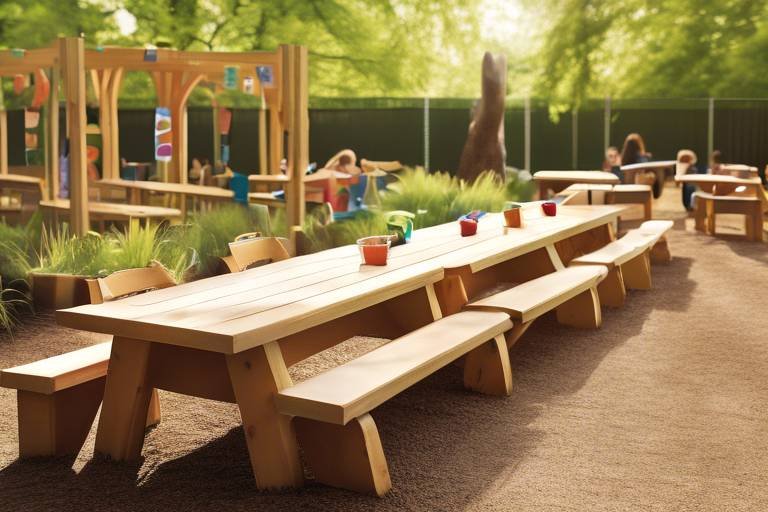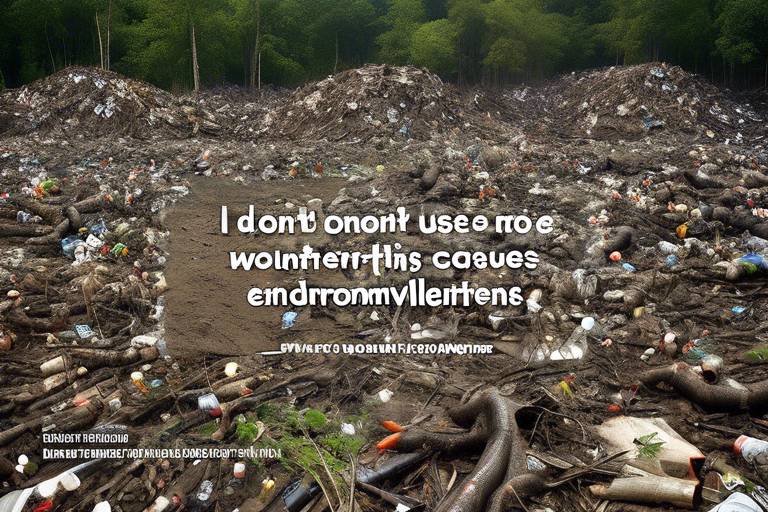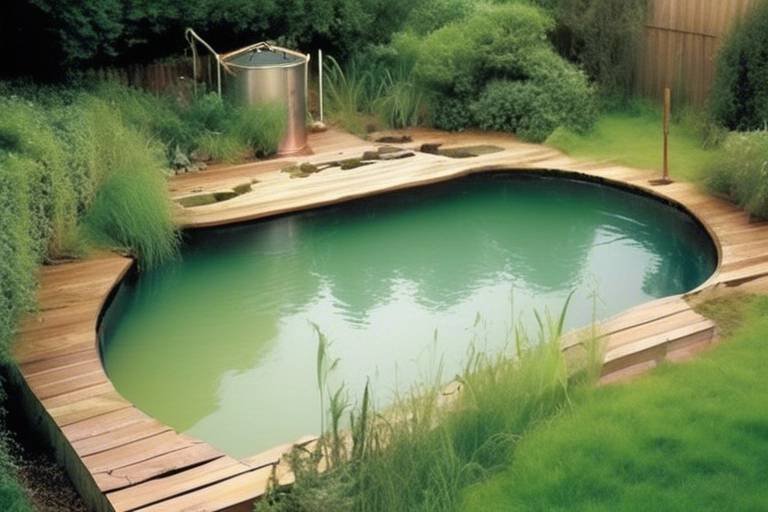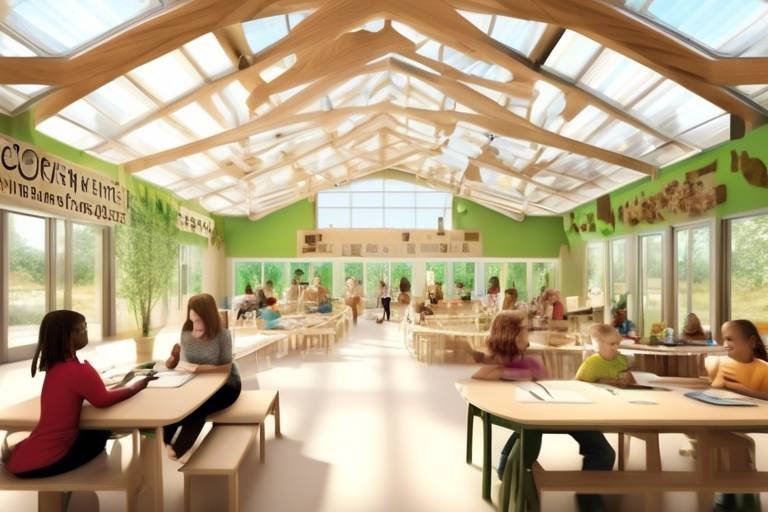How to Create a Sustainable Outdoor Classroom
Creating a sustainable outdoor classroom is a rewarding endeavor that offers numerous benefits for both students and the environment. By establishing an eco-friendly learning space, educators can provide a unique opportunity for students to connect with nature, engage in hands-on learning experiences, and develop a deeper understanding of sustainability.
When designing an outdoor classroom, it is essential to consider key elements that promote sustainability and biodiversity. Incorporating native plants, creating diverse habitats, and using recycled materials are all important aspects of creating a thriving outdoor environment that supports local ecosystems.
Implementing green infrastructure features such as rain gardens, green roofs, permeable surfaces, and solar panels can further enhance the sustainability of the outdoor space while minimizing its environmental impact. These eco-friendly elements not only benefit the environment but also serve as valuable educational tools for students to learn about sustainable practices.
Engaging students in sustainability within the outdoor classroom is crucial for fostering a sense of environmental stewardship. By involving students in activities like gardening, composting, recycling initiatives, and energy conservation projects, educators can empower them to make a positive impact on the world around them.
Integrating outdoor learning experiences with academic curriculum standards provides students with hands-on opportunities to apply classroom knowledge in real-world settings. This interdisciplinary approach not only enhances learning outcomes but also encourages students to develop a deeper appreciation for the natural world.
Effective management of an outdoor classroom involves considerations such as safety guidelines, behavior expectations, scheduling outdoor lessons, and maximizing learning opportunities in nature. By establishing clear protocols and fostering a culture of respect for the environment, educators can create a positive and enriching outdoor learning environment.
Collaborating with local organizations, businesses, and volunteers is essential for enhancing the outdoor classroom experience and accessing additional resources. By building strong community partnerships, educators can create a sense of shared responsibility for the outdoor space and promote a culture of environmental stewardship among students and community members.

Benefits of Outdoor Classrooms
Exploring the benefits and steps involved in establishing an eco-friendly outdoor learning environment that promotes sustainability, connection with nature, and experiential education for students of all ages.
Outdoor classrooms offer a myriad of advantages that go beyond traditional indoor learning spaces. By immersing students in nature, these outdoor environments provide a unique setting for education that fosters numerous benefits:
Enhanced Student Engagement: Outdoor classrooms captivate students' attention by offering a dynamic and stimulating learning environment. The natural surroundings spark curiosity and encourage active participation in lessons.
Improved Physical and Mental Health: Spending time outdoors has been linked to reduced stress levels, improved mood, and enhanced overall well-being. Outdoor classrooms provide students with opportunities for physical activity and fresh air, contributing to their health and happiness.
Increased Creativity: Nature inspires creativity and imagination. Outdoor settings stimulate innovative thinking and problem-solving skills, allowing students to explore and express themselves in new ways.
Deeper Understanding of Environmental Concepts: By experiencing nature firsthand, students develop a profound connection to the environment. Outdoor classrooms facilitate hands-on learning experiences that deepen students' understanding of ecological principles and sustainability.
Exploring the key elements of designing a sustainable outdoor classroom, such as incorporating native plants, creating diverse habitats, utilizing recycled materials, and promoting biodiversity.
Highlighting the importance of integrating eco-friendly features like rain gardens, green roofs, permeable surfaces, and solar panels to minimize environmental impact and enhance sustainability.
Strategies for involving students in sustainable practices within the outdoor classroom, including gardening, composting, recycling initiatives, energy conservation projects, and nature-based activities.
Exploring ways to align outdoor learning experiences with academic curriculum standards, fostering interdisciplinary connections and providing hands-on opportunities for students to apply classroom knowledge in real-world settings.
Tips for effectively managing an outdoor classroom environment, including safety considerations, behavior guidelines, scheduling outdoor lessons, and maximizing learning opportunities in nature.
The importance of collaborating with local organizations, businesses, and volunteers to enhance the outdoor classroom experience, access additional resources, and foster a sense of community involvement and stewardship.
Stay tuned for answers to common queries about creating and maintaining a sustainable outdoor classroom!

Designing the Outdoor Space
Exploring the benefits and steps involved in establishing an eco-friendly outdoor learning environment that promotes sustainability, connection with nature, and experiential education for students of all ages.
Discussing the advantages of outdoor learning spaces, including enhanced student engagement, improved physical and mental health, increased creativity, and a deeper understanding of environmental concepts.
When it comes to designing an outdoor classroom, it's essential to focus on creating a space that not only facilitates learning but also fosters a deep connection with nature. Incorporating elements like native plants can help in attracting local wildlife and creating a biodiverse environment. Additionally, utilizing recycled materials not only reduces waste but also sets a sustainable example for students. By promoting biodiversity through the design of the outdoor space, students can witness the interconnectedness of ecosystems firsthand, enhancing their understanding of environmental concepts.
Highlighting the importance of integrating eco-friendly features like rain gardens, green roofs, permeable surfaces, and solar panels to minimize environmental impact and enhance sustainability.
Strategies for involving students in sustainable practices within the outdoor classroom, including gardening, composting, recycling initiatives, energy conservation projects, and nature-based activities.
Exploring ways to align outdoor learning experiences with academic curriculum standards, fostering interdisciplinary connections and providing hands-on opportunities for students to apply classroom knowledge in real-world settings.
Tips for effectively managing an outdoor classroom environment, including safety considerations, behavior guidelines, scheduling outdoor lessons, and maximizing learning opportunities in nature.
The importance of collaborating with local organizations, businesses, and volunteers to enhance the outdoor classroom experience, access additional resources, and foster a sense of community involvement and stewardship.

Implementing Green Infrastructure
Implementing green infrastructure in an outdoor classroom is essential for minimizing environmental impact and promoting sustainability. By incorporating eco-friendly features such as rain gardens, green roofs, permeable surfaces, and solar panels, educators can create a more environmentally conscious learning environment. These elements not only help reduce water runoff and energy consumption but also serve as educational tools for students to learn about renewable energy and ecological systems.
One effective way to implement green infrastructure is by designing a rain garden within the outdoor space. Rain gardens are planted areas that collect and absorb rainwater, reducing the amount of runoff that can carry pollutants into waterways. By selecting native plants with deep root systems, rain gardens can also help improve soil health and biodiversity while providing a hands-on learning experience for students.
Another important aspect of green infrastructure is the use of green roofs, which involve covering a building or structure with vegetation. Green roofs not only provide insulation and reduce energy costs but also create habitat for wildlife and improve air quality. Integrating green roofs into the design of an outdoor classroom can enhance the overall sustainability of the space while offering unique opportunities for students to study plant growth and ecosystem dynamics.
Additionally, incorporating permeable surfaces such as permeable pavement or gravel pathways can help reduce stormwater runoff and prevent erosion. These surfaces allow rainwater to infiltrate the ground, replenishing groundwater supplies and reducing the strain on municipal drainage systems. By choosing sustainable materials for pathways and play areas, educators can demonstrate the importance of responsible land use and conservation practices to students.
Solar panels are another key component of green infrastructure that can be integrated into an outdoor classroom to harness renewable energy. By installing solar panels on rooftops or in sunny areas of the outdoor space, educators can demonstrate the potential of solar power as a clean and sustainable energy source. Students can learn about the benefits of solar energy production and its role in reducing greenhouse gas emissions, contributing to a more environmentally conscious mindset.

Engaging Students in Sustainability
Engaging students in sustainability within the outdoor classroom is a crucial aspect of fostering environmental stewardship and instilling a sense of responsibility towards the planet. By involving students in hands-on activities that promote sustainable practices, educators can empower them to become active participants in creating a greener future.
One effective strategy for engaging students in sustainability is through gardening projects. By allowing students to plant and care for native species, they can learn about the importance of biodiversity and the role of plants in supporting ecosystems. Additionally, gardening provides a tangible way for students to connect with nature and witness the impact of their actions on the environment.
Another engaging activity is composting, where students can learn about the process of decomposition and the benefits of recycling organic waste. Setting up a composting system in the outdoor classroom not only reduces waste but also teaches students about nutrient cycling and soil health.
Recycling initiatives are also a valuable way to engage students in sustainability. By implementing a recycling program within the outdoor classroom, students can learn about the importance of waste reduction, resource conservation, and the impact of their consumption habits on the environment. Encouraging students to actively participate in recycling efforts can instill lifelong habits of environmental responsibility.
Furthermore, energy conservation projects can provide students with practical experience in reducing energy consumption and promoting sustainable practices. Educators can introduce activities that raise awareness about energy usage, such as monitoring energy consumption, implementing energy-saving measures, and exploring renewable energy sources like solar power.
Lastly, nature-based activities offer unique opportunities for students to engage with sustainability concepts in a hands-on and experiential way. From nature walks and wildlife observation to water quality testing and habitat restoration, these activities allow students to connect with the natural world, develop a deeper appreciation for biodiversity, and understand the interconnectedness of ecosystems.

Curriculum Integration
Exploring the benefits and steps involved in establishing an eco-friendly outdoor learning environment that promotes sustainability, connection with nature, and experiential education for students of all ages.
Discussing the advantages of outdoor learning spaces, including enhanced student engagement, improved physical and mental health, increased creativity, and a deeper understanding of environmental concepts.
Exploring the key elements of designing a sustainable outdoor classroom, such as incorporating native plants, creating diverse habitats, utilizing recycled materials, and promoting biodiversity.
Highlighting the importance of integrating eco-friendly features like rain gardens, green roofs, permeable surfaces, and solar panels to minimize environmental impact and enhance sustainability.
Strategies for involving students in sustainable practices within the outdoor classroom, including gardening, composting, recycling initiatives, energy conservation projects, and nature-based activities.
When it comes to curriculum integration in outdoor classrooms, it's essential to align outdoor learning experiences with academic standards to create meaningful connections. By incorporating hands-on activities and real-world applications, students can deepen their understanding of various subjects. For example, science lessons can involve exploring the ecosystem in the outdoor space, while math activities can focus on measuring plant growth or calculating energy savings from solar panels. By blending classroom curriculum with outdoor experiences, students can engage with the material in a practical and immersive way.
Tips for effectively managing an outdoor classroom environment include establishing safety protocols, setting behavior expectations, creating a schedule for outdoor lessons, and maximizing learning opportunities in nature. By ensuring a well-organized and safe outdoor learning environment, educators can facilitate engaging and impactful experiences for students.
The importance of collaborating with local organizations, businesses, and volunteers cannot be overstated when creating a sustainable outdoor classroom. By forming partnerships, schools can access additional resources, expertise, and support to enhance the outdoor learning environment. Community involvement fosters a sense of stewardship and shared responsibility for the outdoor space, creating a more enriching experience for students and educators alike.
Stay tuned for answers to common queries about establishing and maintaining an outdoor classroom!

Outdoor Classroom Management
Managing an outdoor classroom requires careful planning and consideration to ensure a safe and effective learning environment for students. Safety should always be a top priority, with regular inspections of the outdoor space to identify any potential hazards and address them promptly. Establishing clear behavior guidelines is essential to maintain order and respect within the outdoor classroom setting. By setting expectations early on and consistently reinforcing them, students can fully engage in the learning experience without disruptions.
When scheduling outdoor lessons, it's important to consider factors such as weather conditions, time of day, and the specific activities planned. Flexibility is key, as outdoor learning is often subject to changes based on environmental factors. Teachers should have backup plans in case of inclement weather or unexpected circumstances to ensure that learning objectives are still met. Maximizing learning opportunities in nature involves utilizing the outdoor space to its full potential, whether through hands-on experiments, observation activities, or group projects that encourage collaboration and critical thinking.

Community Partnerships and Support
Community partnerships play a vital role in supporting and enhancing the outdoor classroom experience. By collaborating with local organizations, businesses, and volunteers, schools can access additional resources and expertise to create a thriving outdoor learning environment. These partnerships not only enrich the educational opportunities available to students but also foster a sense of community involvement and environmental stewardship.
Local businesses can contribute by providing materials, expertise, or financial support for outdoor classroom projects. For example, a landscaping company might donate native plants or help design a rain garden, while a solar energy company could assist in installing solar panels to power outdoor lighting. These partnerships not only benefit the school but also showcase the businesses' commitment to sustainability and community engagement.
Community organizations, such as nature reserves, environmental groups, or gardening clubs, can offer educational programs, workshops, or field trips that complement the outdoor classroom curriculum. Students can learn from experts in various environmental fields, participate in hands-on activities, and gain a deeper appreciation for nature and conservation efforts in their community.
Volunteers play a crucial role in maintaining and expanding outdoor classroom initiatives. Parents, community members, and university students can assist with garden maintenance, habitat restoration projects, or outdoor lessons. By involving volunteers, schools can build a strong network of support and instill a sense of ownership and pride in the outdoor classroom among the broader community.
Frequently Asked Questions
- What are the benefits of outdoor classrooms?
Outdoor classrooms offer numerous advantages, including increased student engagement, improved physical and mental health, enhanced creativity, and a deeper understanding of environmental concepts. Students benefit from hands-on learning experiences in natural settings, which can lead to better academic performance and overall well-being.
- How can I design a sustainable outdoor classroom?
Designing a sustainable outdoor classroom involves incorporating elements like native plants, diverse habitats, recycled materials, and biodiversity promotion. By creating a green infrastructure with features such as rain gardens, green roofs, permeable surfaces, and solar panels, you can minimize environmental impact and enhance sustainability in your outdoor learning space.
- What strategies can be used to engage students in sustainability within the outdoor classroom?
Engaging students in sustainability practices can be achieved through activities like gardening, composting, recycling initiatives, energy conservation projects, and nature-based learning experiences. By involving students in hands-on projects that promote environmental stewardship, you can foster a sense of responsibility and connection to the natural world.
- How can outdoor learning experiences be integrated into academic curriculum standards?
Aligning outdoor learning experiences with academic curriculum standards involves creating interdisciplinary connections and providing opportunities for students to apply classroom knowledge in real-world settings. By connecting outdoor activities to educational goals, teachers can enhance the learning process and make lessons more engaging and relevant to students.
- What are some tips for effectively managing an outdoor classroom environment?
Managing an outdoor classroom requires attention to safety considerations, behavior guidelines, scheduling outdoor lessons, and maximizing learning opportunities in nature. By establishing clear rules, ensuring student safety, and utilizing the outdoor space effectively, teachers can create a positive and productive learning environment for their students.
- Why is it important to build community partnerships and seek support for outdoor classrooms?
Building community partnerships and seeking support for outdoor classrooms is essential for accessing additional resources, enhancing the outdoor learning experience, and fostering a sense of community involvement and stewardship. By collaborating with local organizations, businesses, and volunteers, schools can create a more sustainable and enriching outdoor educational environment for students.



















